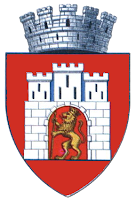 Situated in the middle of today's Romania, Sighişoara (Saksesch Schäsbrich, Šesburχ, German Schäßburg, Magyar Segesvár, or Latin Saxoburgum) is placed near the ancient Dacian settlement of Sandava, and the fortified Castrum Stenarum (or Capistenarum) with archaeological findings from Legio XIII Gemina.
Situated in the middle of today's Romania, Sighişoara (Saksesch Schäsbrich, Šesburχ, German Schäßburg, Magyar Segesvár, or Latin Saxoburgum) is placed near the ancient Dacian settlement of Sandava, and the fortified Castrum Stenarum (or Capistenarum) with archaeological findings from Legio XIII Gemina.
The fortress was built by Saxon settlers, invited to the region by King Géza II of Hungary to defend the eastern border. The town was first mentioned in 1280 by the name of Castrum Sex, and in 1298 as Schespurch but the settlement was already inhabited in 1191.
Placed at the trading crossroads the town was an important economic and religious center in the medieval times. In 1999, the inhabited citadel of Sighişoara was designated a UNESCO World Heritage Site, for its 850 year old testimony to the history and culture of the Transylvanian Saxons.
Nowadays a medieval festival is hosted every year at the end of July, when the peaceful fortress suddenly gets very crowded and noisy, but this is the time when the streets are filled with folk and rock music, jesters, street acts and handicraft.
More info on Wikipedia, Wikitravel and some here. The location is on Google Maps and some of my photos taken during the festival follow:
Sighişoara (Schäßburg/Segesvár)
Bran (Törzburg/Törcsvár)
 30 Km from the city of Braşov, Bran dates back to the beginning of the XIII-th century. It was founded by the Teutonic Order as a wooden fort and it had a strategic position, between Wallachia and Transylvania.
30 Km from the city of Braşov, Bran dates back to the beginning of the XIII-th century. It was founded by the Teutonic Order as a wooden fort and it had a strategic position, between Wallachia and Transylvania.
Nowadays it is a peaceful commune, one of the most famous places in Romania, due to its castle in which it is thought that Prince Vlad Ţepes, the legendary Dracula (found in Bram Stoker's novel), lived. The Bran castle was built in 1377 by King Sigismund of Hungary. The castle is opened for visiting, while inside its courtyard one can see some traditional Romanian houses.
In Bran there is also a copy of the "Stella Maris" chapel from Balchick, built by Pricess Ileana, where the heart of Queen Mary should have been kept after the Treaty of Craiova.
The location of the Bran Castle is here. Some more info and pictures on the official site, here and below:
Braşov (Kronstadt/Brassó)
 Being a rather big city (267 sq km), there's so much to tell and so much to see, that I'll mostly post links to other sites with further information about Braşov, for example Wikipedia or the comprehensive Brașov Travel Guide. Situated in a picturesque area, with hills and mountains nearby, and with the Tâmpa Mountain (995 m) overlooking the town, Braşov (also known as Brassó in Hungarian, Kronstadt in German , Brassovia or Corona in Medieval Latin or Stalin City during 1950-1960) contains one of the biggest and best preserved medieval cities in the area.
Being a rather big city (267 sq km), there's so much to tell and so much to see, that I'll mostly post links to other sites with further information about Braşov, for example Wikipedia or the comprehensive Brașov Travel Guide. Situated in a picturesque area, with hills and mountains nearby, and with the Tâmpa Mountain (995 m) overlooking the town, Braşov (also known as Brassó in Hungarian, Kronstadt in German , Brassovia or Corona in Medieval Latin or Stalin City during 1950-1960) contains one of the biggest and best preserved medieval cities in the area.
The first attested mention of Braşov is Terra Saxonum de Barasu ("Saxon Land of Baras"), in a document from 1252. The old city has many sights and many of the houses date back hundreds of years ago. Some points of interest are:
- The Black Church (Biserica Neagră) - dates back to 1477, with a Gothic architecture, blackened by smoke from the 1689 great fire.
- The central square (Piaţa Sfatului)
- The First Romanian School.
- The Rope Street (Strada Sforii) - one of the most narrow street in Europe (111-135 cm wide and 80m long)
- St. Nicholas Church - 14th century
- The Citadel Fortress (Cetaţuia/Der Berg Schloss) - built in 1529 and upgraded several times, nowadays a restaurant can be found inside its walls.
- The Bastions of the guilds and the fortress gates - Graft Bastion, White Tower, Black Tower, Blacksmiths' Bastion, Catherine's Gate, Schei Gate, Weavers' Bastion
Here is the list of all the cultural interest points from Braşov county (unfortunately only in Romanian) . Location of the old city is on Google maps. Some more info on romaniatourism.com and some photos here and bellow:
























































